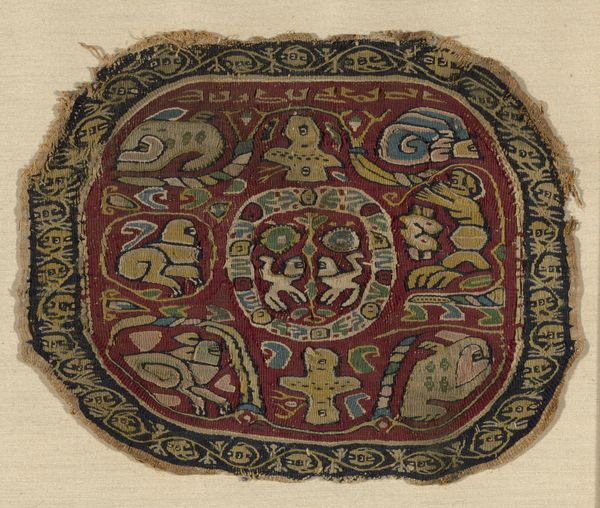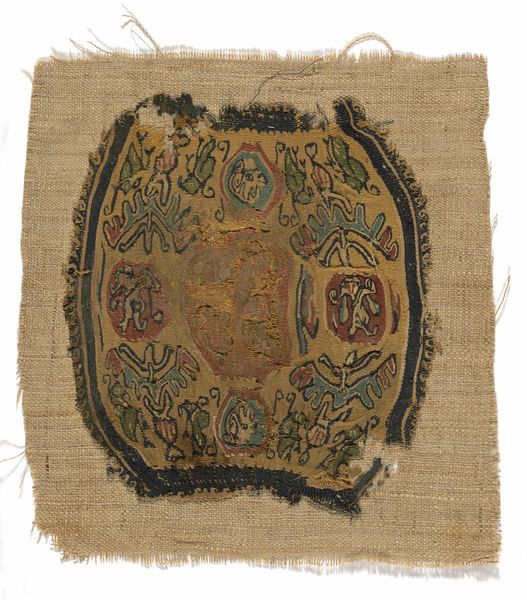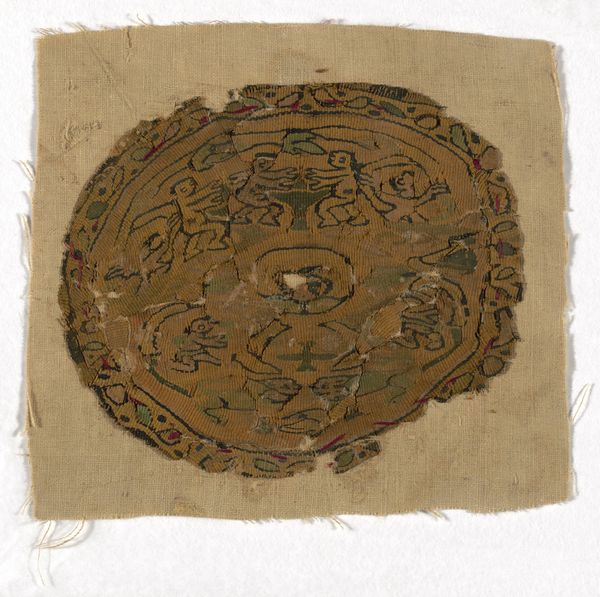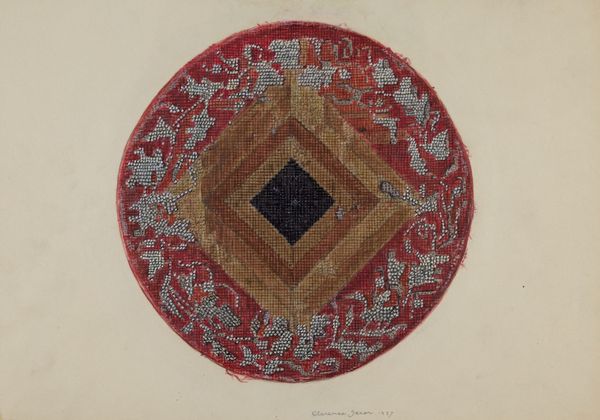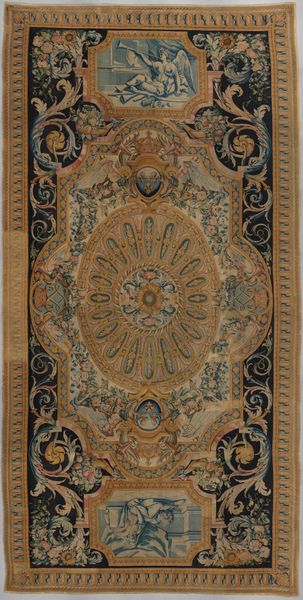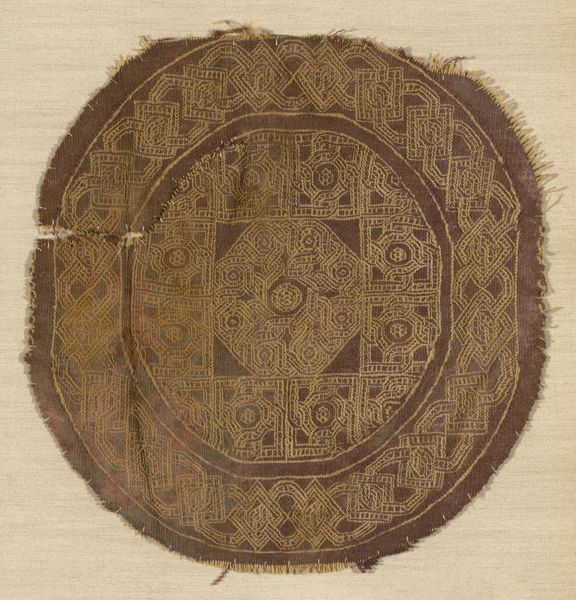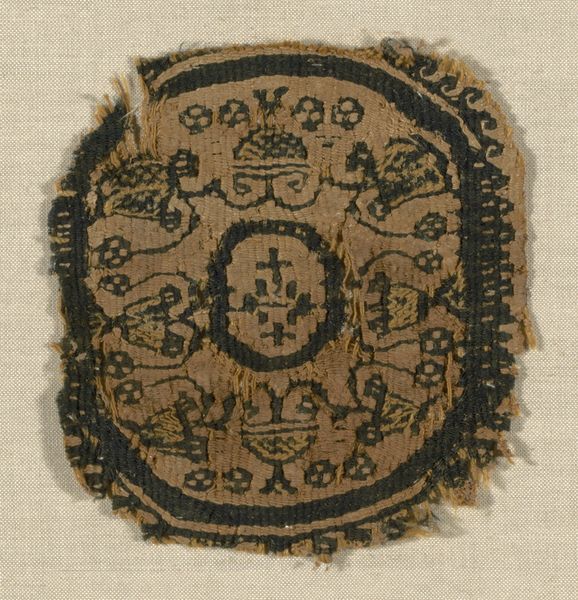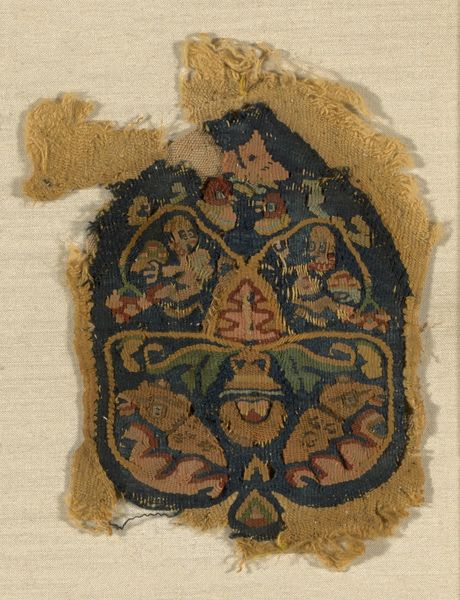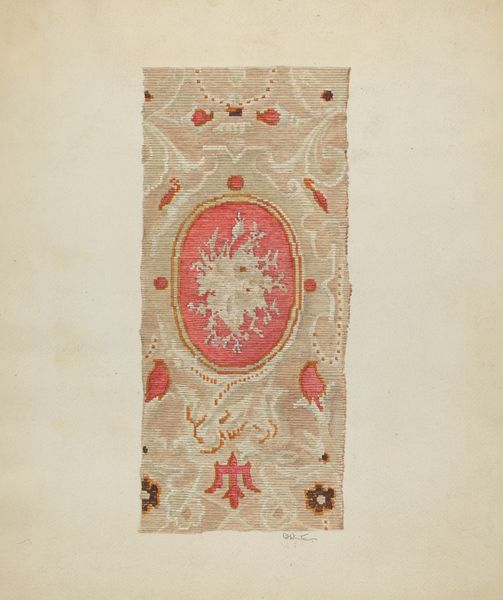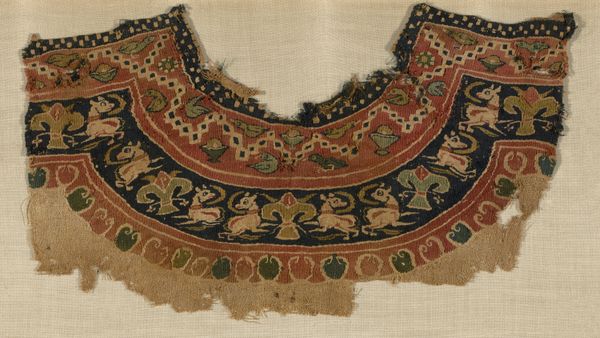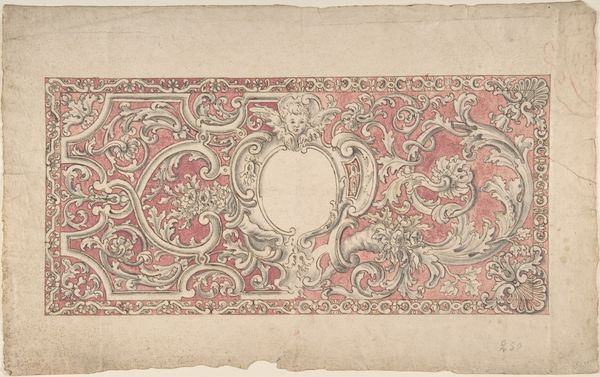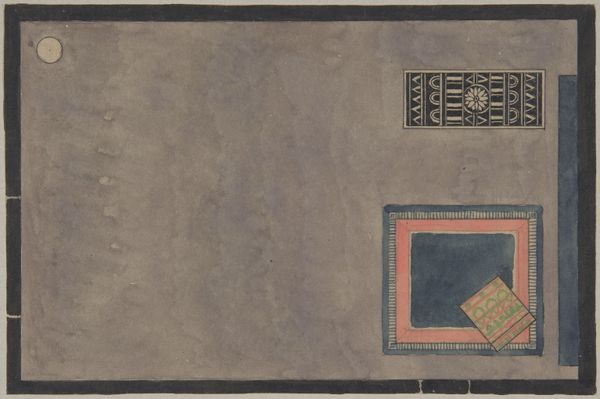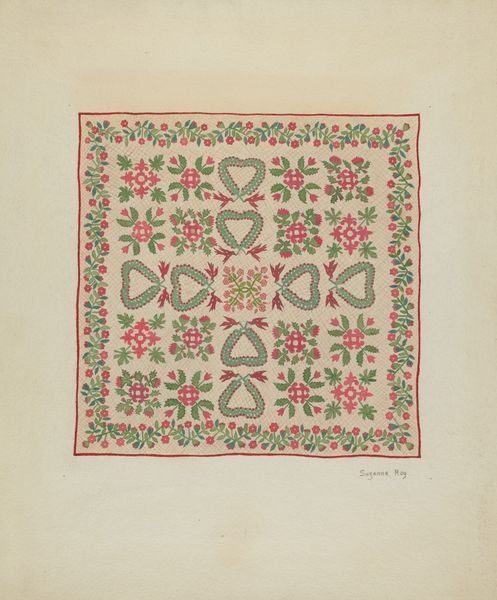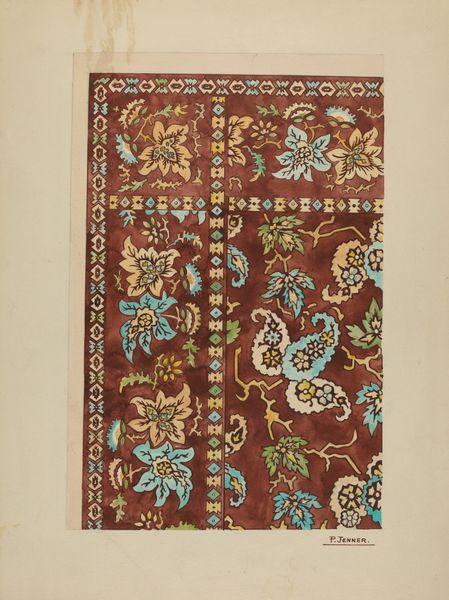
fibre-art, weaving, textile
#
fibre-art
#
weaving
#
textile
#
ancient-egyptian-art
#
text
#
traditional architecture
#
tile art
#
ancient-mediterranean
Dimensions: 25.1 × 21.6 cm (9 7/8 × 8 1/2 in.)
Copyright: Public Domain
Curator: Let's turn our attention to this captivating textile work from the Roman period, believed to be from the 3rd to 5th century. It’s entitled "Panel," and is housed here at The Art Institute of Chicago. Editor: Immediately, I'm drawn to the concentric rings, the bold use of color and that wonderfully rough, organic edge. It feels so tactile and grounded. Curator: Indeed. The composition invites close inspection. Note how the concentric bands—each employing different weaving techniques—define the structure, from the core to its frayed perimeter. Observe the motifs within: figures and abstracted forms seemingly chasing each other around the central medallion. Editor: And it’s worth considering where this "Panel" might have originated, or who made it. During this period, the Coptic people in Egypt integrated diverse cultural influences—Roman, Greek, Egyptian. This object becomes a compelling illustration of cultural fusion and how artisans adapt existing artistic styles. Curator: Precisely. If we analyse it according to a semiotic frame, each motif serves as a signifier of the symbolic language of the Coptic textile tradition, perhaps illustrating power or the cycles of life. The figures, seemingly suspended in mid-motion, possess a dynamic rhythm across the circular field, creating a balanced visual architecture. Editor: Absolutely, the movement suggests both the continuation of tradition but also its negotiation in times of political upheaval and religious transition, after the Roman administration, under Byzantium, consolidated in Egypt. Perhaps it was used as a burial shroud for upper-class women who were devout followers. Curator: An insightful contextualisation! Focusing back on the construction itself, one sees that the meticulous weave patterns, although abstract and simple, exemplify refined technical and artistic craftsmanship within this piece. Editor: From an art historical vantage, one can easily imagine a workshop, teeming with artisans, amidst a cultural crossroads of trade and conversion, contributing to a vibrant exchange between pagan visual culture and new Christian symbology, weaving narratives for social function. Curator: The convergence of structural analysis and cultural history unveils this piece beyond mere surface decoration to become an important document. Thank you! Editor: My pleasure; it's through layering insights that such woven narratives gain relevance for current interpretation and contemporary audience reflection!
Comments
No comments
Be the first to comment and join the conversation on the ultimate creative platform.
